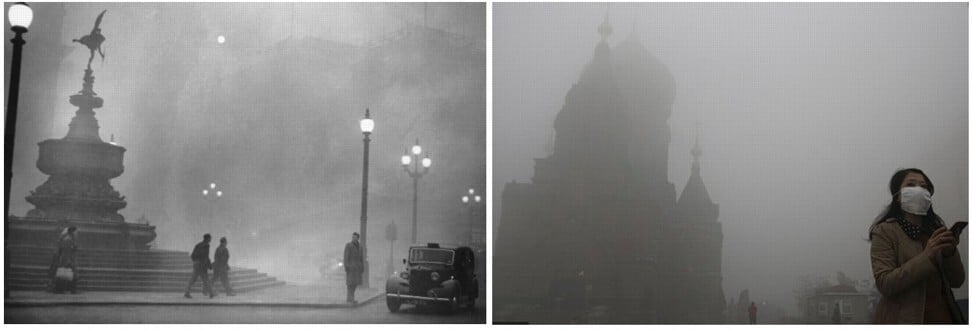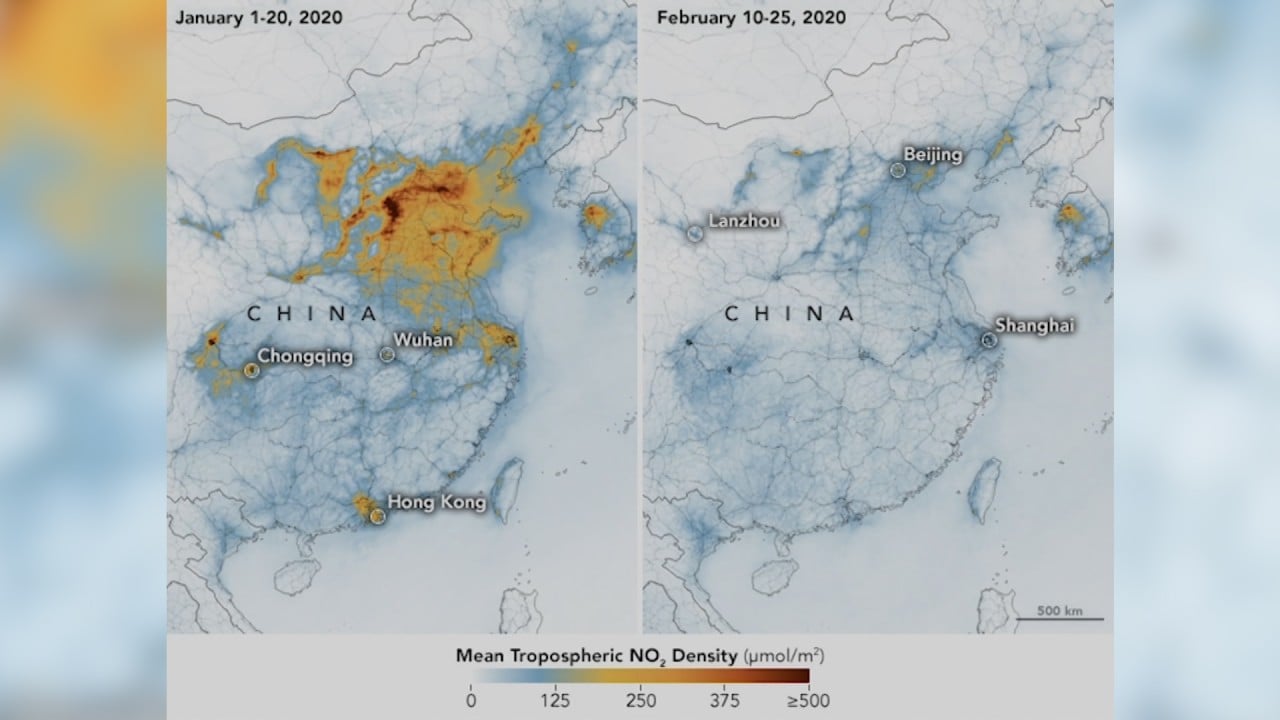
Climate change: China must seize the day on coal, or a toxic cocktail of winter smog and coronavirus awaits
- As Hong Kong hunkers down amid a third wave of Covid-19 and roasting temperatures, it’s easy to wish for a return to the ‘old normal’
- But take a deep breath and reconsider. Going back could be extremely dangerous, not only for the climate but for local pollution too

I am not a particularly religious person, but I do feel like there is some kind of reckoning going on. Over the past four or five years, we have witnessed a series of intensifying weather-related natural disasters, from the fires that ravaged Australia and California, the vicious typhoons that chewed through Southeast Asia and Japan, right up to the monsoon rainfall that currently threatens the structural integrity of the Three Gorges Dam. At the same time, we are roasting in Hong Kong, breaking records in daily temperatures. And somehow there’s snow in Beijing?
The scientific consensus says climate change is to blame. And on that score, it seems that when the coronavirus stopped the world’s industry in its tracks, it did more to clean up the earth in a couple of months than Swedish activist Greta Thunberg achieved being a thorn in President Donald Trump’s side. In Greta’s defence, she was asking nicely – the virus didn’t wait for an answer.

KEEPING THE LIGHTS ON
During the pandemic, China appears to have pulled off some kind of economic miracle, as its economy reportedly grew 3.2 per cent in Q2 2020, and local economists are pointing at huge backlogs of orders from its trading partners.
As the second and third waves of Covid-19 are hitting trouble spots around the globe, pretty much everyone is getting rather fed up, hoping scientists can come up with a vaccine so we can rid ourselves of this plague and get back to normal as soon as possible. Yet, although I’m firmly in the “fed up” camp, the environmental impact from quickly returning to the old normal could be quite severe and extremely dangerous, not only because of what it would mean for the climate but also local pollution.
HONG KONG POLLUTION
As I’m writing this, Central is looking very green on the aqicn.org air quality website, and green is good. Looking back over the past 12 months, we had much higher filth ratings in yellow and orange hues until about late April. They were “normal” days, with an occasional sneeze, mangy skin and pink eye. Inhaling the filthy, fume-laden air whilst navigating the random movement of pedestrians to grab a lunchtime sandwich was a daily chore.
And yet it could be worse. Take the worst thrown at us by Hong Kong’s buses, cars, shipping, and the winds from the Pearl River Delta, multiply that five or six times and you’ve got Beijing on a bad day. On a particularly smoggy winter day, one can draw a comparison to London 70 years ago. The combination of smog and fog, my Mum recalls, led to days known as “peasoupers” – you can’t see through pea soup.


01:25
China’s industrial heartland ‘sacrificed’ in war on pollution
THE KILLER SMOG
On December 5, 1952, the Great Smog of London settled over the city, in what was to become the deadliest environmental disaster in recorded history. Until that point, Londoners had lived with pollution as part of their daily lives, much like the people of Beijing do today. Coal was used to generate power and heat homes, industry was booming in the post-war period, and diesel buses had replaced electric trams.
During an unusually cold and windless period, a combination of smoke and sulfur dioxide built up in the air. On the first day, visibility fell to 30cm, cars were abandoned and cattle in Smithfield market dropped dead. On the second day, 500 Londoners died, and the ambulances stopped running as the drivers had no idea where they were going. The next day’s death toll reached 900, and it kept climbing. The wind finally returned and blew away the smog on December 9. Modern-day estimates put the total number of fatalities as a direct result of the smog at 12,000, and around 100,000 were made ill. The event changed the British view on coal and led to the introduction of the Clean Air Act in 1963.
Photographs from London at the time bear a striking resemblance to the smog in Beijing two years ago. If something similar were to happen this winter, with the coronavirus still likely on the loose, the result could be horrific for Beijing’s 22 million residents.

GLOBAL USE OF COAL
Coal use by developed nations has slowly been in retreat, with Britain proudly announcing that this year it has had more coal-free power-generation days than ever before. But it took them 70 years to get there, and a decade ago coal still accounted for 40 per cent of electricity generation in Britain. Countries with developed coal-burning power plants such as Japan and China are still pushing the cheap fuel on developing countries, and China continues to rely heavily on it to power its factories.
That is not to say that the Chinese government is unaware or unconcerned. Several cities have been the target of a policy to clean up Beijing and surrounding areas: Tianjin, Tangshan and Baoding. The Yangtse and Pearl River deltas, the latter of which Hong Kong is a part of, are two other major coal-powered areas that worry policymakers.
As for investors, they have been ganging up on coal producers to make them scale back production or suffer the consequences on their share prices.
For example, the Church of England recently led the powerful Climate Action 100+ group of wealthy global investors demanding the world’s largest companies that contribute to greenhouse gas emissions take action on climate change.
For instance, they forced Australia’s largest miner, Glencore, to cap its coal production. The Japanese took the hint and the country’s trading companies announced they would stop acquiring more coal resources.
If we see emissions surge back after Covid-19, so will the ire of climate activist investors.

03:31
Coronavirus: blue skies over Chinese cities as Covid-19 lockdown temporarily cuts air pollution
All this raises a question for policymakers everywhere. Should they pull out all the stops to return economies to the way things were before Covid-19, and resume the kind of environmental damage activists have been fighting for decades to reduce? The question is pressing for China, which would return to pollution levels of six months ago with the potential for super smog on cold winter days in Beijing. Or does the economic reset caused by the virus offer a chance to slow things down permanently and protect the lives of urban residents, not to mention the climate, and let customers wait a little longer for the goods on order? ■
Neil Newman is a thematic portfolio strategist focused on Asian equity markets